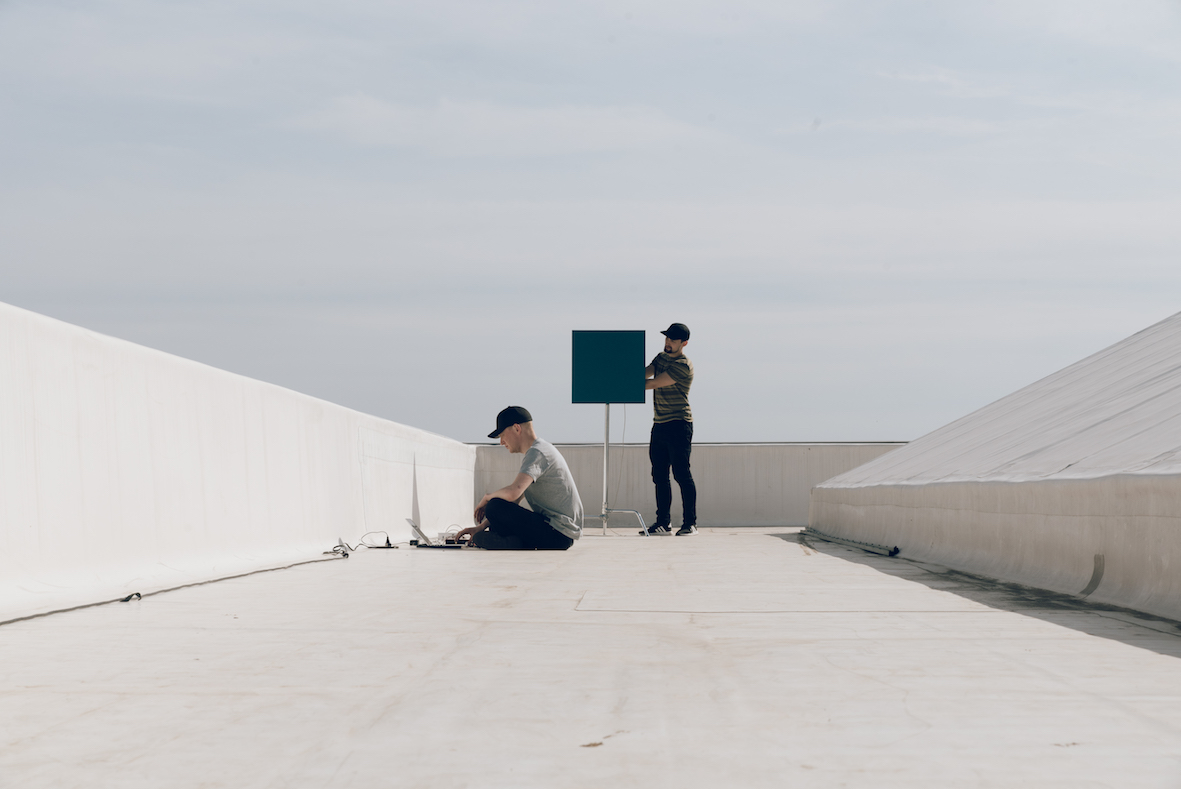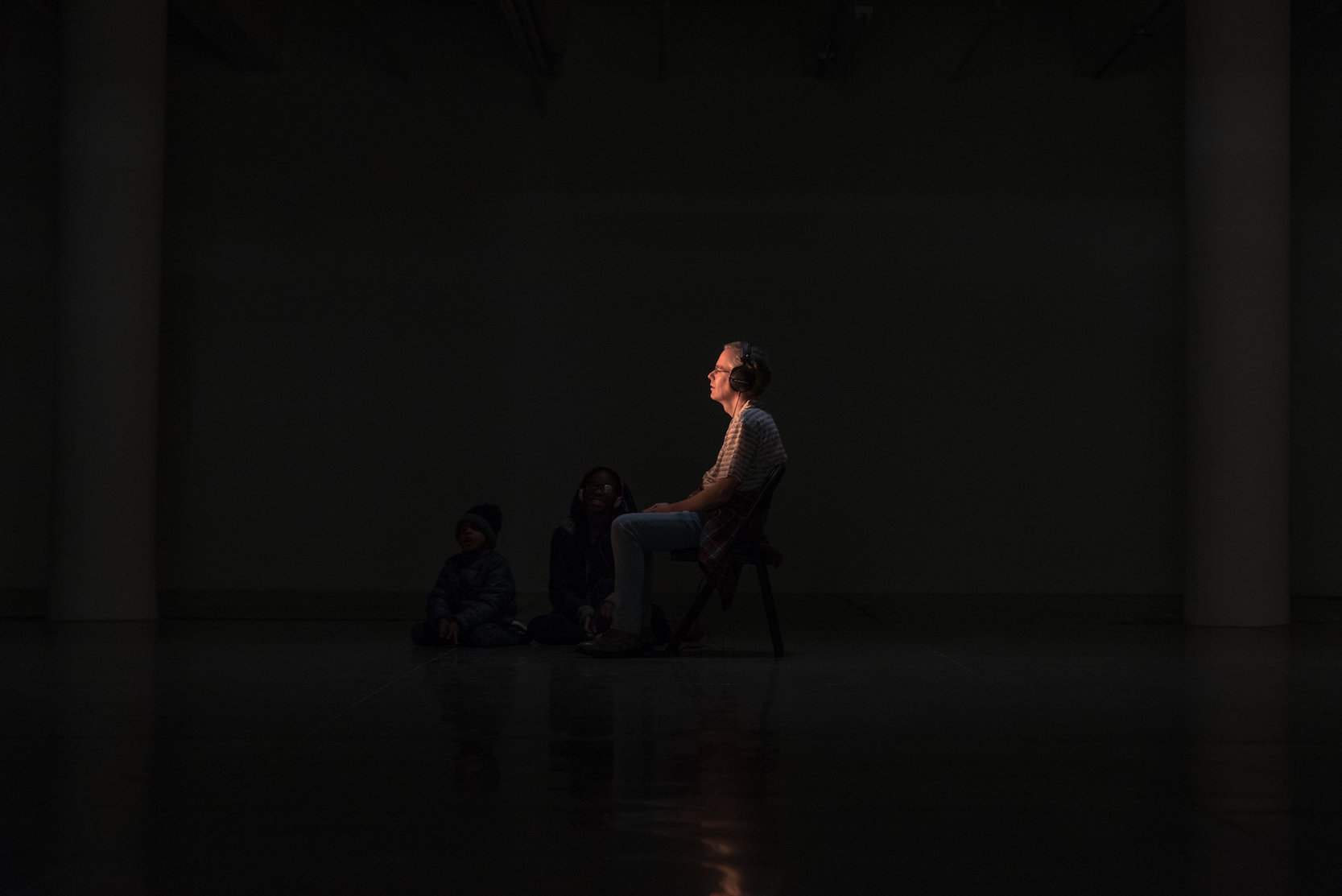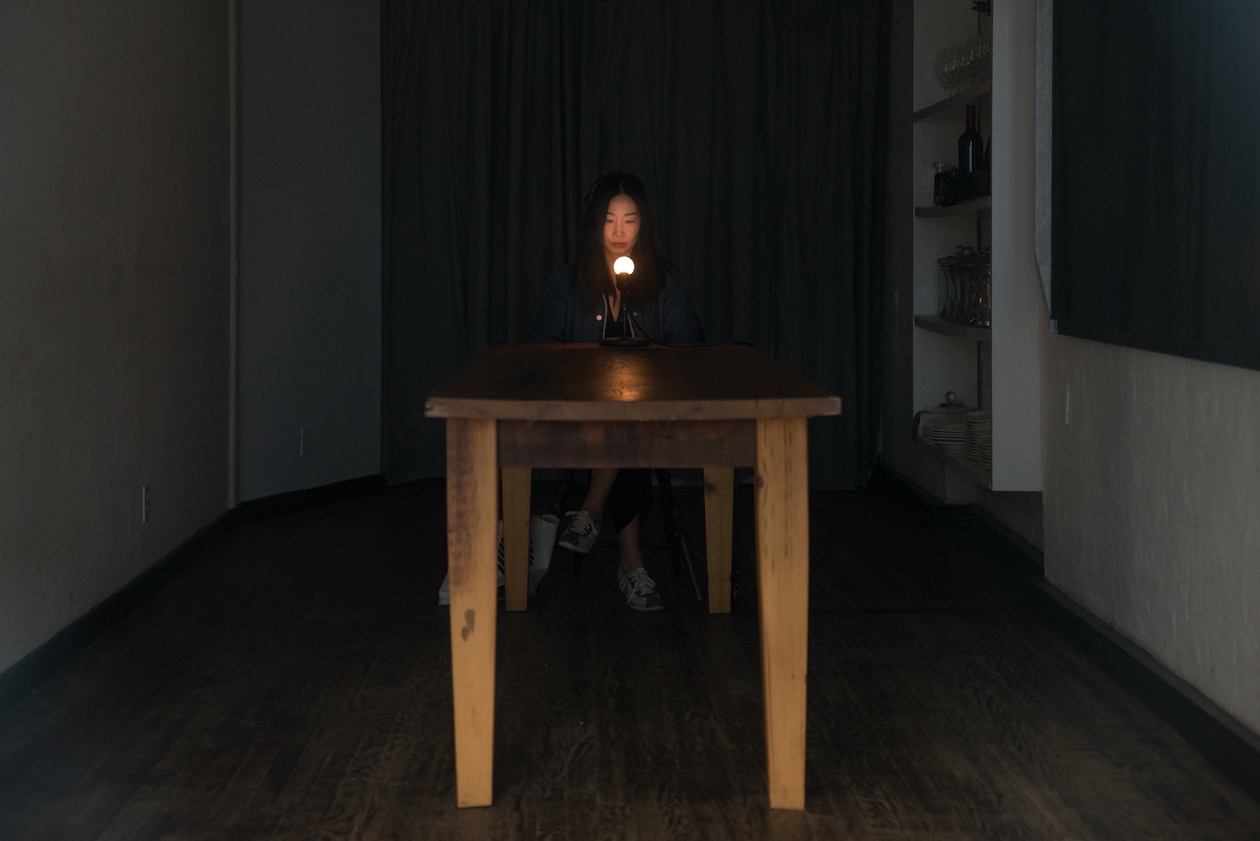Interview with artists Mark Niskanen and Jani-Matti Salo
Mark Niskanen and Jani-Matti Salo, an artist duo Niskanen Salo, have been actively presenting their works during the past year in the US and Helsinki, Finland. In this interview, they share their thoughts about their mutual practice and their upcoming work before starting their year in NYC as artists-in-residence at Mana Contemporary.
What’s your background?
Mark: I am a multidisciplinary artist working mainly with sound and lens-based media. I was born in the Soviet Union, grew up in Finland, and then spent eight years studying and working in the United States.
Jani-Matti: I use space and light as my materials. I graduated from the University of the Arts in Helsinki. Mark and I have been working together since 2015. Interview continues after image…

What is the role of a viewer/visitor in your work?
M: We always think of our artwork as a situation formed by the relationship between the viewer and the installation: how does one approach the installation, how do they feel while experiencing the piece, and what happens when they leave.
J-M: Our works are often time-based and ephemeral, subjective, bodily experiences, and values for ephemerality and presence are pronounced. The pieces are not often possible to document visually or share with others.
the best work we do is a combination of mutual thematic interests and practical trial-and-error, which often leads us to a place that we have not explored in our previous practice as artists”
How would you describe the process of creating a new piece?
J-M: We always create our work in an active relationship to its environment. Through a pedantic spatial analysis, we plan the dramaturgy of the viewer meeting the installation and delve deep into researching the history and context of the installation environment with an objective to learning about its background and culture. It is a site-sensitive method, in which we knowingly strive to build a circumstance as a response to the prevailing environment. Attention is brought to the complex and constantly changing interrelationships and structures between the viewer, the installation, and the environment.
M: We spend a lot of time together, whether it be in a studio or just talking about future projects and prospective concepts, and discuss various themes that are in our consciousness at the time. Sometimes these discussions develop into an idea for a piece, sometimes they don’t. So far, it seems that the best work we do is a combination of mutual thematic interests and practical trial-and-error, which often leads us to a place that we have not explored in our previous practice as artists. It is a process of finding the unknown unknowns, if you will.
J-M: During the process I also use literature as source material. Most recently, I’ve delved into philosopher Jacques Rancière’s writings on the emancipation of the spectator into an active agent. In addition, the essays about both the challenge and the potential of space by geographer Doreen Massey have informed my thinking for years.
Since you’ve been working in New York in the past, how do you find the NYC art scene compared to Scandinavia?
M: New York has been the epicenter of contemporary art for quite a few decades, so the context for its art scene and that of Scandinavia is quite different. I especially appreciate the diversity of artists and their academic backgrounds in New York, which I miss when I’m in Finland. On the other hand, New York has long been seeing some growing pains due to the living cost that is unrealistic for most artists.
J-M: Most of my experience of the art scene in the US is through Mana Contemporary, which has an exceptional community of artists. Mana Contemporary in less than ten years has grown to be one of the most significant cultural centers in the New York area. It is a platform for interdisciplinary collaboration, encouraging experimentation and new artistic work across media. As an environment, it serves our practice in which constant discussion and experimentation is integral in the development of a new work.
What are your long term goals? Why?
M: My long term goal is to simply be able to continue as a full-time artist, and lower the amount of necessary compromises year by year. I think Jani-Matti and I have a practice that has potential for many things yet unexplored.
J-M: I have similar goals as Mark. I would also like to work with large-scale-installations in environments, which allow a holistic and sensitive spatial thinking.
Thinking about the state of the world are there social or political view you want to comment with your works? If yes, why? If no why not?
M: Everything we do is based on and then guided by our most fundamental beliefs. However, rather than commenting on the cacophony of politics today directly, we strive to make work that momentarily distances the viewer from the laws of the everyday and helps them see potential for themselves or others in a different light. Sometimes this means creating a platform for anonymous interactions, other times our work creates a space for solitude and subjective introspection. Interview continues after image…

During the past year, you have worked on a public art commissioned by Helsinki Art Museum – HAM. What do you want to bring to the passers-by on Baana with your piece?
M: Baana is an interesting place to install our work, since it has so much to do with routine and the everyday for a lot of people in Helsinki. We wanted to keep this in mind when conceptualizing the work, and make something, that each passerby will perceive differently, depending on the direction and speed of their movement. By appropriating the advertisement light sign, we point to the everyday object that is omnipresent in the city and ask: what else could we do with the abundance of public space currently reserved for advertising?
J-M: During the process, we also researched the equipment and techniques used for guiding naval traffic. As the work is situated in the historic Helsinki harbour rail, we decided to combine an everyday object used in the contemporary city environment with the naval traffic signage techniques. Through the movement of the passerby, the consequences of everyday decisions of the active individual are brought to the foreground.
Image 1: Mark Niskanen & Jani-Matti Salo: No Names (2016). The viewer realizes being connected to a unknown person somewhere in a distant location. The light bulb acts as the embodiment of the unknown person, illuminated by the their voice. The conversation is anonymous and does not contain a predetermined script or a length. Photo: Courtesy of the artists.
Image 2: Jani-Matti Salo and Mark Niskanen. Photo: Courtesy of the artists.
Image 3: Mark Niskanen & Jani-Matti Salo: Focal Point (2018). Focal Point is an installation designed to be experienced alone. Seemingly understated from the outside, an immersion into the piece is only possible from one point in the exhibition space where the nine intricately focused rays of light meet, putting the viewer in an immediate state of momentary solitude, secluded introspection and a heightened bodily awareness. Photo: Courtesy of the artists.
Focal Point at HAM until end of January 2019.

